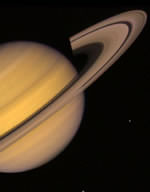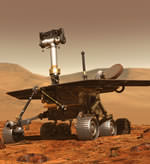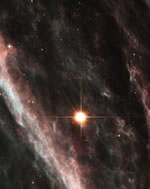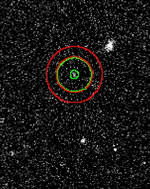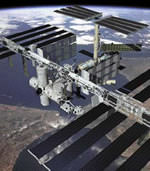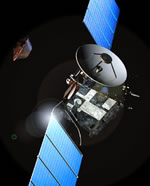
Image credit: ESA
Europe’s mission to Mars continues with the next crucial step of Mars Express’ journey out of the way. The clamps holding Beagle 2 tightly during launch were released over the course of 30 minutes on Thursday morning. If this phase had malfunctioned, Mars Express wouldn’t have been able to release Beagle 2 when they reached Mars, ending the mission before it had begun. The spacecraft is expected to arrive at Mars in late December.
Europe’s first mission to the Red Planet, continues its successful mission with another successful ‘high-risk’ post-launch milestone. Mars Express engineers breathed a sigh of relief this morning at the European Space Operations Centre (ESOC), in Germany.
If a particularly delicate operation had not proceeded as planned, it would have been impossible to deploy the Mars Express lander, Beagle 2, on arrival at Mars.
This crucial operation consisted of releasing Beagle-2’s launch clamps. These clamps are extra attachments that ensure the lander stays perfectly fixed to the spacecraft during the launch and is not affected by launch vibrations. After the launch, these clamps are no longer needed, since another mechanism keeps Beagle 2 in place during the six-month trip to the Red Planet.
This second mechanism allows Mars Express to deploy Beagle 2 on arrival at Mars. However, if the launch clamps had not released today, the second mechanism would have failed. “The Beagle-2 mission would have been over before it had even started!” commented ESA Lander Manager, Con McCarthy.
The release of the launch clamps started at 10.10 CEST and lasted about 30 minutes. The release mechanism itself is unusual. Usually, launch clamps contain a firework-like mechanism, but Mars Express had a much gentler release mechanism for Beagle. It consisted of a sleeve over a clamp bolt; an electric current heats the sleeve to about 100?C. At that temperature, the sleeve expands and the bolt snaps. There were three bolts and they all broke in sequence.
“We had to wait two minutes for the expansion of the sleeve which snapped the bolt. The atmosphere in the room was tense and those two minutes seemed to last an eternity! When the first bolt went, a lot of tension was released,” says McCarthy.
There are more hurdles ahead but Mars Express is demonstrating that it can deal with the many challenges on the way to the Red Planet.
Original Source: ESA News Release

